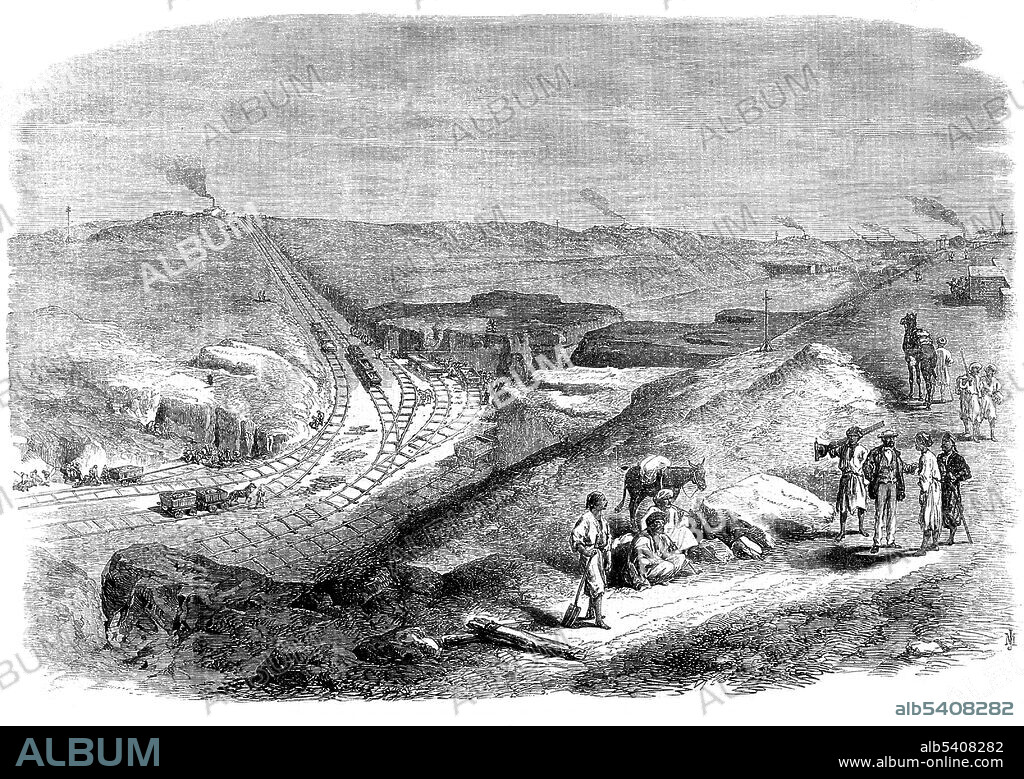alb5408282
Suez Canal Construction,1860s

|
Zu einem anderen Lightbox hinzufügen |
|
Zu einem anderen Lightbox hinzufügen |



Haben Sie bereits ein Konto? Anmelden
Sie haben kein Konto? Registrieren
Dieses Bild kaufen.
Nutzung auswählen:

Titel:
Suez Canal Construction,1860s
Untertitel:
Siehe automatische Übersetzung
The Suez Canal is an artificial sea-level waterway in Egypt, connecting the Mediterranean Sea to the Red Sea through the Isthmus of Suez. Ferdinand de Lesseps obtained a concession from Sa'id Pasha, the Khedive of Egypt and Sudan, to create a company to construct a canal open to ships of all nations. The Suez Canal Company came into being in 1858 and work started on the shore of the future Port Said in April 1859. The excavation used forced labor of Egyptian workers during the first years. Some sources estimate that over 30,000 people were working on the canal at any given period, that more than 1.5 million people from various countries were employed, and that thousands of laborers died. The canal offers watercraft a shorter journey between the North Atlantic and northern Indian Oceans via the Mediterranean and Red seas by avoiding the South Atlantic and southern Indian oceans, in turn reducing the journey by approximately 4,300 miles. The canal opened under French control on November 17, 1869. Although numerous technical, political, and financial problems had been overcome, the final cost was more than double the original estimate.
Bildnachweis:
Album / Science Source
Freigaben (Releases):
Model: Nein - Eigentum: Nein
Rechtefragen?
Rechtefragen?
Bildgröße:
4320 x 3062 px | 37.8 MB
Druckgröße:
36.6 x 25.9 cm | 14.4 x 10.2 in (300 dpi)
Schlüsselwörter:
 Pinterest
Pinterest Twitter
Twitter Facebook
Facebook Link kopieren
Link kopieren Email
Email
